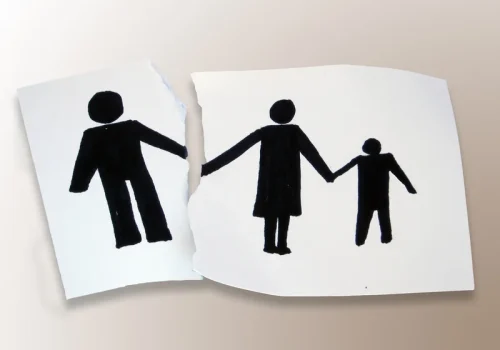
The substance is absorbed into the bloodstream through the stomach and the walls of the small intestines, affecting the kidneys, bladder, liver, lungs and skin. Many people who have previously experienced alcohol withdrawal also recommend having cayenne pepper on hand. It keeps your stomach calm and helps improve your appetite when you do not feel like eating.

So why do alcohol’s effects hit people so differently?
The second is a chronic phase in which you drink large amounts of alcohol, but you are conscious and moving naturally due to the high tolerance developed over time. Your experience of the condition’s toxic effect differs depending on whether you are in the acute or chronic phase. It’s also important to know how much alcohol is in your drink because that will determine how long it takes to metabolize your drink. For example, some beers have a higher alcohol content, affecting how much alcohol you consume from one drink. When you drink alcohol, it is quickly absorbed in the stomach and small intestines. The fastest way to eliminate alcohol is to rest, eat healthy foods, drink water, and wait.
Saliva and Breathalyzer Tests: Between 12-24 Hours
- The only way to deal with alcohol poisoning is by getting emergency medical attention.
- If you take more than the recommended dose, you may experience withdrawal symptoms.
- Seeking professional help and embracing a holistic approach can improve the chances of successfully overcoming alcohol dependence.
- A special test, known as the EtG test, is often given to confirm abstinence in a person who is required to maintain sobriety for legal or medical reasons.
- But that advice changes if you’re living with alcohol use disorder.
- Heavy drinking can eliminate vitamins and minerals from the body, which can lead to a hangover.
The complex carbohydrates in whole grains help absorb the extra alcohol in your system and provide much-needed B vitamins that are lost when you drink. Eating probiotic-rich foods can help your digestive system recover from the consumption of alcohol more quickly. For resources related to AUD, including how to get support, please visit the NIH website. We’ve also partnered with Moderation Management, a non-profit dedicated to reducing the harm caused by the misuse of alcohol.
How Long Can Alcohol Be Detected on a Urine Test?
Several studies have shown that alcohol elimination rates in humans are typically between 0.12 and 0.16 g/L/h. Stress can cause a slight uptick in elimination rates, making it 0.18g/L/h on average. The EtG urine test is essential when complete abstinence is required, such as during withdrawal or in professional settings with zero-tolerance policies. Here are some tips for what to eat and not to eat as you flush alcohol out of your system. Rest allows your body to heal and recover faster, helping you feel better sooner.
- Women also tend to have a higher percentage of body fat and a lower percentage of water, which influences intoxication and the length of time it takes to get alcohol out of their system.
- If your body has developed a tolerance to alcohol, completely stopping—and attempting to flush it out of your system—can lead to withdrawal.
- It can be hard to find (or even know) the balance of how much alcohol your body is able to handle.
The organ breaks down the alcohol into acetaldehyde, a chemical the body recognizes as toxic. Acetaldehyde metabolizes into carbon dioxide, which the body can eliminate. If you want to flush out alcohol how to flush alcohol out of your system in 12 hours from your body on your own, be prepared to do a lot of work. If you want the easier way, work with reputable institutions like Stonewall Institute today and start turning your life around.


Even dogs do it — you say “walk” and they high-tail it to get their leash. Remove all alcohol from your home or ask a friend or family member to do it for you. This includes beer, wine, and liquor, as well as products that contain alcohol such as rubbing alcohol and vanilla extract. Try to occupy yourself with short activities, such as television shows, walks, video games, or trips to a store. Keep a list of emergency phone numbers on hand that includes contact info for your doctor, the police, a nearby hospital, and someone you trust. And consider joining a support group such as Alcoholics Anonymous.
That means it can take three to seven hours for your body to metabolise and eliminate one to four drinks, depending on several factors. Once alcohol enters your bloodstream after you drink, your body starts to break it down and metabolise a portion every hour. Your body flushes the alcohol out of your system steadily but slowly. As a result, if you drink a lot or very quickly, some unmetabolised alcohol will linger in your blood, leading to intoxication. In order to get alcohol out of your system, you have to understand how long it can stay in your body. I mentioned earlier some of the factors that determine how quickly your body processes alcohol.

The liver does the heavy lifting when it comes to processing alcohol. After the alcohol passes through your stomach, small intestine and bloodstream, your liver starts its cleanup. If you don’t have enough ADH or ALDH, your stomach will send the alcohol directly to the small intestine. From there, it hits your bloodstream and your brain, and you start feeling its effects.
Women who drink their normal amount of alcohol prior to menstruation will experience higher BACs than they otherwise would. Drinking stronger alcoholic beverages can accelerate the absorption rate. This causes alcohol to stay in your system for longer periods of time. If you don’t like drinking water straight up, you can add a little flavoring to it. After the first week, it is recommended that you go back to drinking at least 64 ounces of water every day.







No Response to "How To Stop Drinking Alcohol"